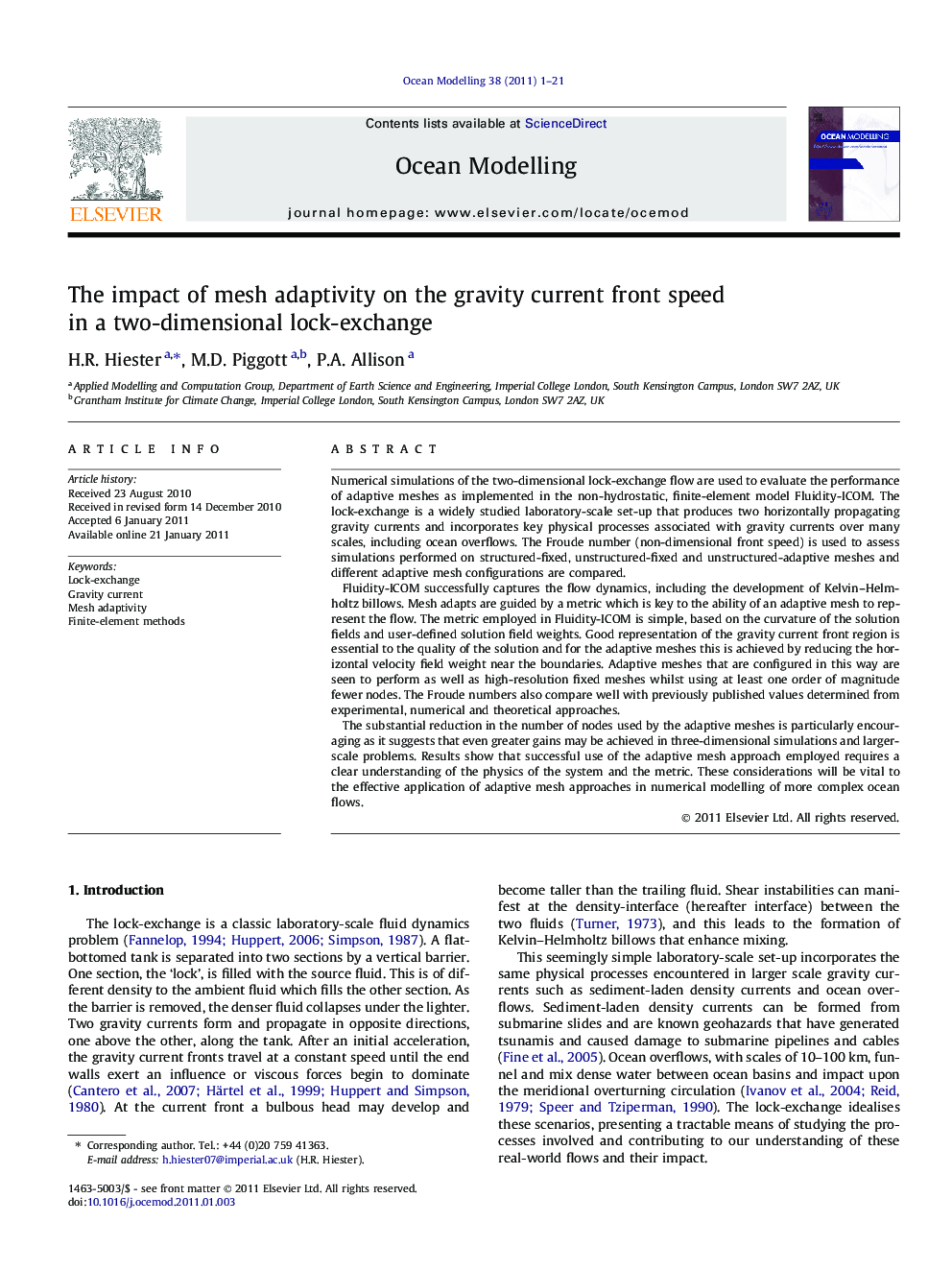| کد مقاله | کد نشریه | سال انتشار | مقاله انگلیسی | نسخه تمام متن |
|---|---|---|---|---|
| 4552281 | 1627805 | 2011 | 21 صفحه PDF | دانلود رایگان |

Numerical simulations of the two-dimensional lock-exchange flow are used to evaluate the performance of adaptive meshes as implemented in the non-hydrostatic, finite-element model Fluidity-ICOM. The lock-exchange is a widely studied laboratory-scale set-up that produces two horizontally propagating gravity currents and incorporates key physical processes associated with gravity currents over many scales, including ocean overflows. The Froude number (non-dimensional front speed) is used to assess simulations performed on structured-fixed, unstructured-fixed and unstructured-adaptive meshes and different adaptive mesh configurations are compared.Fluidity-ICOM successfully captures the flow dynamics, including the development of Kelvin–Helmholtz billows. Mesh adapts are guided by a metric which is key to the ability of an adaptive mesh to represent the flow. The metric employed in Fluidity-ICOM is simple, based on the curvature of the solution fields and user-defined solution field weights. Good representation of the gravity current front region is essential to the quality of the solution and for the adaptive meshes this is achieved by reducing the horizontal velocity field weight near the boundaries. Adaptive meshes that are configured in this way are seen to perform as well as high-resolution fixed meshes whilst using at least one order of magnitude fewer nodes. The Froude numbers also compare well with previously published values determined from experimental, numerical and theoretical approaches.The substantial reduction in the number of nodes used by the adaptive meshes is particularly encouraging as it suggests that even greater gains may be achieved in three-dimensional simulations and larger-scale problems. Results show that successful use of the adaptive mesh approach employed requires a clear understanding of the physics of the system and the metric. These considerations will be vital to the effective application of adaptive mesh approaches in numerical modelling of more complex ocean flows.
Research highlights
► Detailed assessment of an adaptive mesh finite-element fluids model.
► Accuracy and efficiency are influenced by the adaptive mesh settings.
► Consideration of both the physics and metric that guide the adaptivity are crucial.
► Adaptive meshes can deliver more than a ten-fold reduction in computational demand.
Journal: Ocean Modelling - Volume 38, Issues 1–2, 2011, Pages 1–21